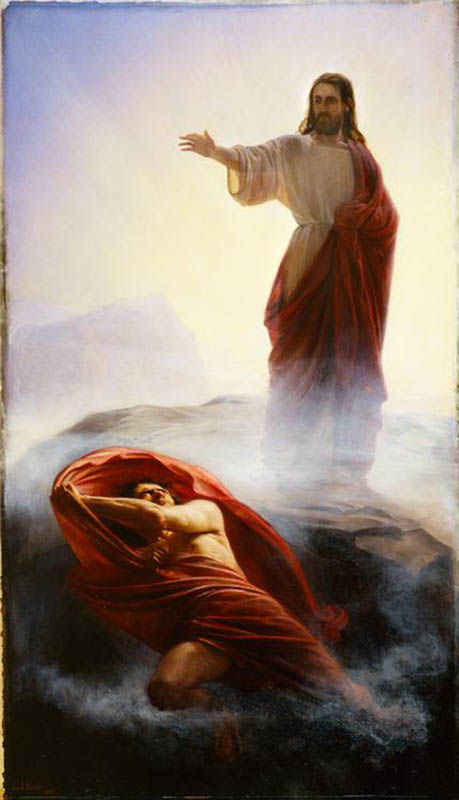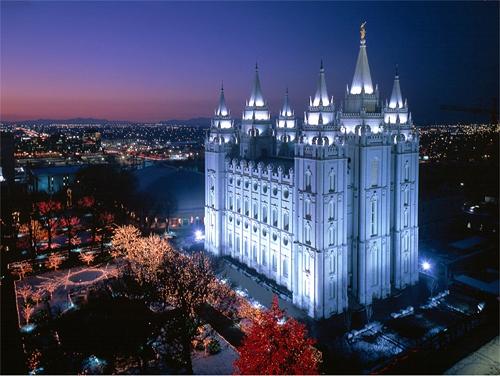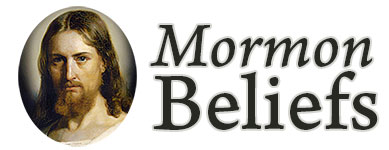The Great Apostasy
 When individuals or groups of people turn away from the principles of the gospel, they are in a state of apostasy. One example is the “Great Apostasy,” which occurred after the Savior established His Church. After the deaths of the Savior and His Apostles, men corrupted the principles of the gospel and made unauthorized changes in Church organization and priesthood ordinances. Because of this widespread apostasy, the Lord withdrew the authority of the priesthood from the earth. This apostasy lasted until Heavenly Father and His Beloved Son appeared to Joseph Smith in 1820 and initiated the restoration of the fulness of the gospel.
When individuals or groups of people turn away from the principles of the gospel, they are in a state of apostasy. One example is the “Great Apostasy,” which occurred after the Savior established His Church. After the deaths of the Savior and His Apostles, men corrupted the principles of the gospel and made unauthorized changes in Church organization and priesthood ordinances. Because of this widespread apostasy, the Lord withdrew the authority of the priesthood from the earth. This apostasy lasted until Heavenly Father and His Beloved Son appeared to Joseph Smith in 1820 and initiated the restoration of the fulness of the gospel.
This does not mean that Christ’s Church was destroyed. The 48,000 Christian churches in the world mostly profess that Christ’s established church could not be overcome. The bestowal of Christ’s grace upon those who sought (and who still do seek Him) has never been lost. However, the power and authority that Christ shared with His apostles, the same that enabled them to perform miracles and enjoy the constant companionship of and revelation through the Holy Ghost, was lost.
The Great Apostasy came as had been foretold by Paul, who knew that the Lord would not come again “except there come a falling away first.” ( 2 Thessalonians 2:3. “Falling away” is translated from the Greek apostasia, meaning “apostasy.”)
This Great Apostasy followed the pattern that had ended each previous dispensation. The very first was in the time of Adam. Then came dispensations of Enoch, Noah, Abraham, Moses, and others. Each prophet had a divine commission to teach of the divinity and the doctrine of the Lord Jesus Christ. In each age these teachings were meant to help the people. But their disobedience resulted in apostasy. Thus, all previous dispensations were limited in time and location. They were limited in time because each ended in apostasy. They were limited in location to a relatively small segment of planet earth.
The “Great Apostasy” was marked by the efforts of men to legislate the nature of the Godhead. Many of these early church bishops knew that God could reveal His own character, but did not do so at the time. Augustine himself lamented that he could not receive the revelation he sought. The bishops could not agree on the most important doctrine of Christianity — the nature of God and Christ. The creeds written by the early Christian churches after the death of the Apostles have guided every Christian congregation since then, even those who have protested against early “orthodoxy”—
The concepts identified by such non-scriptural terms as “the incomprehensible mystery of God” and “the mystery of the Holy Trinity” are attributable to the ideas of Greek philosophy. These philosophical concepts transformed Christianity in the first few centuries following the deaths of the Apostles. For example, philosophers then maintained that physical matter was evil and that God was a spirit without feelings or passions. Persons of this persuasion, including learned men who became influential converts to Christianity, had a hard time accepting the simple teachings of early Christianity: an Only Begotten Son who said he was in the express image of his Father in Heaven and who taught his followers to be one as he and his Father were one, and a Messiah who died on a cross and later appeared to his followers as a resurrected being with flesh and bones.
The collision between the speculative world of Greek philosophy and the simple, literal faith and practice of the earliest Christians produced sharp contentions that threatened to widen political divisions in the fragmenting Roman empire. This led Emperor Constantine to convene the first church-wide council in a.d. 325. The action of the council of Nicaea remains the most important single event after the death of the Apostles in formulating the modern Christian concept of deity. The Nicene Creed erased the idea of the separate being of Father and Son by defining God the Son as being of “one substance with the Father.”
Other councils followed, and from their decisions and the writings of churchmen and philosophers there came a synthesis of Greek philosophy and Christian doctrine in which the orthodox Christians of that day lost the fullness of truth about the nature of God and the Godhead. The consequences persist in the various creeds of Christianity, which declare a Godhead of only one being and which describe that single being or God as “incomprehensible” and “without body, parts, or passions.” One of the distinguishing features of the doctrine of The Church of Jesus Christ of Latter-day Saints is its rejection of all of these post-biblical creeds (see Stephen E. Robinson, Are Mormons Christians? Salt Lake City: Bookcraft, 1991; Encyclopedia of Mormonism, ed. Daniel H. Ludlow, 4 vols., New York: Macmillan Publishing Co., 1992, s.v. “Apostasy,” “doctrine,” “God the Father,” and “Godhead”).
In the process of what we call the Apostasy, the tangible, personal God described in the Old and New Testaments was replaced by the abstract, incomprehensible deity defined by compromise with the speculative principles of Greek philosophy. The received language of the Bible remained, but the so-called “hidden meanings” of scriptural words were now explained in the vocabulary of a philosophy alien to their origins. In the language of that philosophy, God the Father ceased to be a Father in any but an allegorical sense. He ceased to exist as a comprehensible and compassionate being. And the separate identity of his Only Begotten Son was swallowed up in a philosophical abstraction that attempted to define a common substance and an incomprehensible relationship.
Of particular difficulty was Christ’s resurrection. The risen Christ was a surprise to even His apostles, but Christ did everything possible, without removing the possibility for faith, to demonstrate that He had become a glorified, resurrected man of flesh and bones. He appeared after His death, ate, drank, had His followers feel His body. He then appeared to the Book of Mormon peoples to show them His resurrected body, and promised them that He would then go to the separated Ten Lost Tribes to do the same thing! Mormons know that Christ is still resurrected, and that resurrection is the ideal state in immortality, and is also enjoyed by God the Father, who is more than a spirit. Why would Christ be resurrected, the first-fruits of a universal resurrection, show Himself over and over in that state, and then abandon His resurrected body to regain His position as spirit God? Mormons do believe in God incarnate, but it was the pre-mortal, spirit Christ who gained a mortal body and then an immortal one.
The Restoration
Then came the First Vision. An unschooled boy [Joseph Smith], seeking knowledge from the ultimate source, saw two personages of indescribable brightness and glory and heard one of them say, while pointing to the other, “This is My Beloved Son. Hear Him!” (JS—H 1:17.) The divine teaching in that vision began the restoration of the fullness of the gospel of Jesus Christ. God the Son told the boy prophet that all the “creeds” of the churches of that day “were an abomination in his sight” (JS—H 1:19). We affirm that this divine declaration was a condemnation of the creeds, not of the faithful seekers who believed in them. Joseph Smith’s first vision showed that the prevailing concepts of the nature of God and the Godhead were untrue and could not lead their adherents to the destiny God desired for them.
After a subsequent outpouring of modern scripture and revelation, this modern prophet declared, “The Father has a body of flesh and bones as tangible as man’s; the Son also; but the Holy Ghost has not a body of flesh and bones, but is a personage of Spirit” (Doctrine and Covenants 130:22).
This belief does not mean that we claim sufficient spiritual maturity to comprehend God. Nor do we equate our imperfect mortal bodies to His immortal, glorified being. But we can comprehend the fundamentals He has revealed about Himself and the other members of the Godhead. And that knowledge is essential to our understanding of the purpose of mortal life and of our eternal destiny as resurrected beings after mortal life.
 In the theology of the restored Church of Jesus Christ, the purpose of mortal life is to prepare us to realize our destiny as sons and daughters of God—to become like Him. Joseph Smith and Brigham Young both taught that “no man … can know himself unless he knows God, and he can not know God unless he knows himself” (in Journal of Discourses, 16:75; see also The Words of Joseph Smith, ed. Andrew F. Ehat and Lyndon W. Cook, Provo: Religious Studies Center, Brigham Young University, 1980, p. 340). The Bible describes mortals as “the children of God” and as “heirs of God, and joint-heirs with Christ” (Romans 8:16–17). It also declares that “we suffer with him, that we may be also glorified together” (Romans 8:17) and that “when he shall appear, we shall be like him” (1 John 3:2). We take these Bible teachings literally. We believe that the purpose of mortal life is to acquire a physical body and, through repentance made possible through the atonement of Jesus Christ and by obedience to the laws and ordinances of the gospel, to qualify for the glorified, resurrected celestial state that is called exaltation or eternal life (Ibid).
In the theology of the restored Church of Jesus Christ, the purpose of mortal life is to prepare us to realize our destiny as sons and daughters of God—to become like Him. Joseph Smith and Brigham Young both taught that “no man … can know himself unless he knows God, and he can not know God unless he knows himself” (in Journal of Discourses, 16:75; see also The Words of Joseph Smith, ed. Andrew F. Ehat and Lyndon W. Cook, Provo: Religious Studies Center, Brigham Young University, 1980, p. 340). The Bible describes mortals as “the children of God” and as “heirs of God, and joint-heirs with Christ” (Romans 8:16–17). It also declares that “we suffer with him, that we may be also glorified together” (Romans 8:17) and that “when he shall appear, we shall be like him” (1 John 3:2). We take these Bible teachings literally. We believe that the purpose of mortal life is to acquire a physical body and, through repentance made possible through the atonement of Jesus Christ and by obedience to the laws and ordinances of the gospel, to qualify for the glorified, resurrected celestial state that is called exaltation or eternal life (Ibid).
Note that “exaltation” means something different than “salvation” for Mormons, and means salvation into God’s full presence to become co-heirs with Christ. This is the “celestial” or highest kingdom of heaven. Joseph Smith and Sidney Rigdon saw all the degrees of heaven, and that most people who have ever lived on this earth will inherit a kingdom in heaven, no matter what their religious beliefs on earth. This is salvation. To learn more about it, read the vision as recorded in Section 76 of the Doctrine and Covenants, then read Section 138, Joseph F. Smith’s vision of the Spirit World, where those who died in rebellion or ignorance are taught to know Christ.
Blessings of the Restoration
The restoration of the true Church of Jesus Christ has provided much more than a corrected view of God the Father and His Only Begotten Son. With the restoration has come the following:
- Priesthood Authority–the authority to act in God’s name.
- The ordinances of the gospel–baptism by immersion, confirmation to bestow the permanent gift of the Holy Ghost, all the temple ordinances, and the sacrament.
- Spiritual gifts and miracles.
- Continuing revelation, both to church leadership and church membership.
- Church organization after the pattern of the ancient church.
- More revealed scripture, all added witnesses to the Bible as the word of God.
- Knowledge lost through centuries of apostasy: the Plan of Salvation, pre-mortal life, the spirit world after death, the kingdoms of glory in heaven, the necessity for the fall of Adam and the atonement.
- The nature of and ordinances for eternal marriage and families sealed together for eternity.
- The nature and use of temples and temple worship.
- The continuum of the gospel through time, that all prophets from Adam have testified that Jesus is the Christ.
- That this is the “last dispensation of time” and that Christ will soon come again to reign on earth.
The Last Dispensation of Time
The Last Dispensation of Time A dispensation of the gospel is a time period, of no particular length, during which the Lord has at least one authorized servant on the earth who holds the keys of the holy priesthood, and who has a divinely appointed commission to “dispense” the gospel to mankind. When a new […]
What is Mormon “Priesthood”?
Most people would define “priesthood” as professionally trained and educated clergy, ordained to positions of leadership in a church. The Church of Jesus Christ of Latter-day Saints, because of revelation through modern prophets, defines “priesthood” as the power and authority to act in God’s name. As was done in Christ’s primitive church, men are called […]
